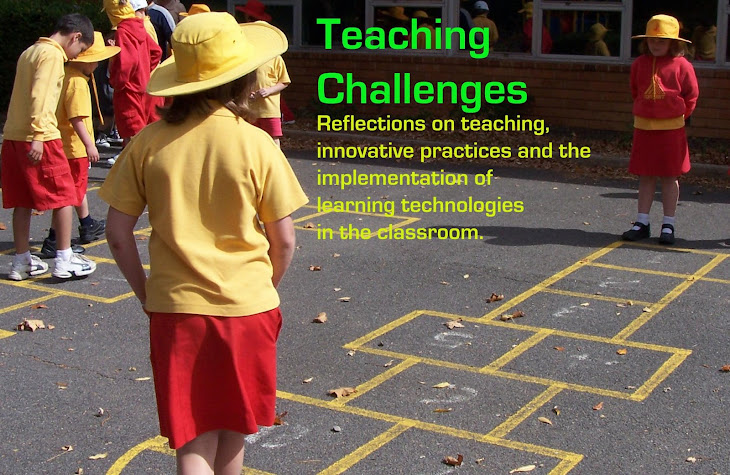Starting a New School Year
When you start a new school year there are always a number of things that need to be trained into students, be it ruling margins, hanging bags on hooks or logging onto computers. Today I thought I would reflect on some of the things I do to train students with computers early in the year so that we can get stuck into the good stuff quicker.Password cards
The students in my class tend to end up with a number of passwords they need to remember or use throughout the year. I create simple password folders for my students by folding an A6 piece of card in half and writing their name on the front. Depending on the age of the students I may get them to write their own usernames and passwords inside. As students acquire more usernames/passwords these can be added to the folder.
Student Storage
Another simple thing that students need is somewhere to store their work. I create a class folder and student folders within that. We save everything to this folder through the year so they soon become familiar with the path required to find and save their work.
Prepare for the Inevitable
Expect difficulties and teach kids to expect them. Anyone who has ever used computers with a class knows that things go wrong, and to different degrees. At the beginning of the year I have students who get upset when their writing shifts down the page because they leaned on the enter key, and the flip-side of that is those who get disheartened because they don't know how to leave a space between words or move to the next line. It takes a bit of patience - both from me and from the students.
I give them my spiel about how it will take them a long time to get anything done at the beginning. They may spend the whole lesson just logging on. But... with practice they will get better and by the end of the year they will be able to make the most of 15 minutes to get something worthwhile done on the computer. I think the key here is practice.
While tempting, I would say DON'T log on and set up everything in advance. Logging on is part of the process and students need to learn and do it. (That said, when I'm trying to manage three or more different tasks in the classroom, feeling exhausted, and am about to crack, I will take the shortcut and login for them!) I also find that before long a few students will stand out as experts and share what they know with others, taking some of the burden from me.
Start with Simple Processes
Understand and appreciate that quality content isn't the initial goal - log on, access program, and save to the right place is a good start! Print and collect print-out is another skill. Once the basics are sorted, then delve into work quality: punctuation, spell check, formatting etc. We don't expect perfection the first time a toddler puts pencil to paper, nor should we expect that of a student when starting out with an unfamiliar computer.
Multitasking
This year I have been working on multitasking when we have the laptops in the classroom. As they take some time to load up, I get students to have other work to do while they wait.
Know the resources
If no one is using them, then... practice. Last year my room was next to the computer lab so we made use of it when the other classes didn't show up for their sessions. This year the laptop storeroom is close by, so we grab them instead. I get frustrated when teachers complain about the resources saying "it would be great to do all these cool things, but we just don't have enough resources" or "our resources never work". That said, it is because of these attitudes that my students get so much extra time!
The start of the year is always hard work, but valuable. Once you establish the basics, you open the door to many more learning opportunities to experience and enjoy through the year. What additional tips do you find useful when getting students started with computers at the beginning of the school year?




















